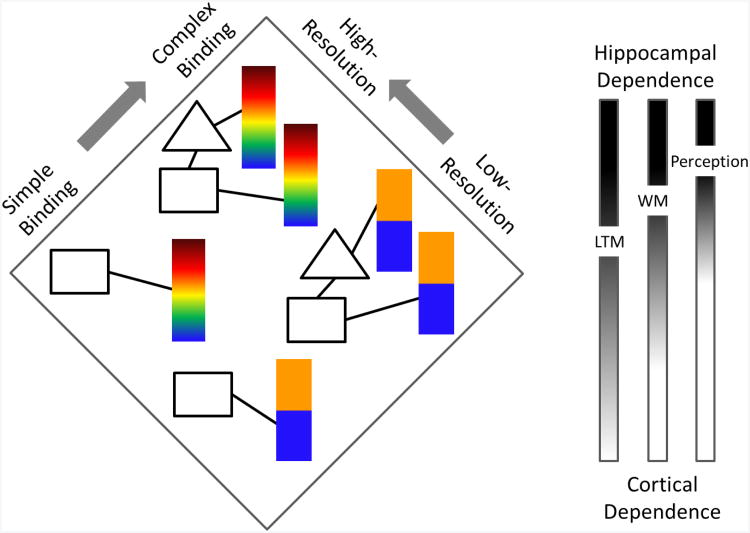Figure 1.
Variations in the resolution and associative nature of binding. Each shape reflects a different item (e.g., word, object, odor), whereas color is used to represent a quality of that item (e.g., hue, location, pleasantness). Representations vary from low-resolution (e.g., orange vs blue, left vs right) to high-resolution (e.g., precise color, precise location), and from simple (e.g. object-color, object-object) to complex bindings (e.g., color-object-object-color). Complex high-resolution representations are expected to be the most hippocampally dependent (dark end of gradient), whereas simple low-resolution bindings will be the least hippocampally dependent (light end of gradient). The extent to which specific bindings will be dependent on the hippocampus or cortex varies across this gradient, and varies as a function of temporal delay inherent in various long-term memory (LTM), working memory (WM) and perception tasks.

